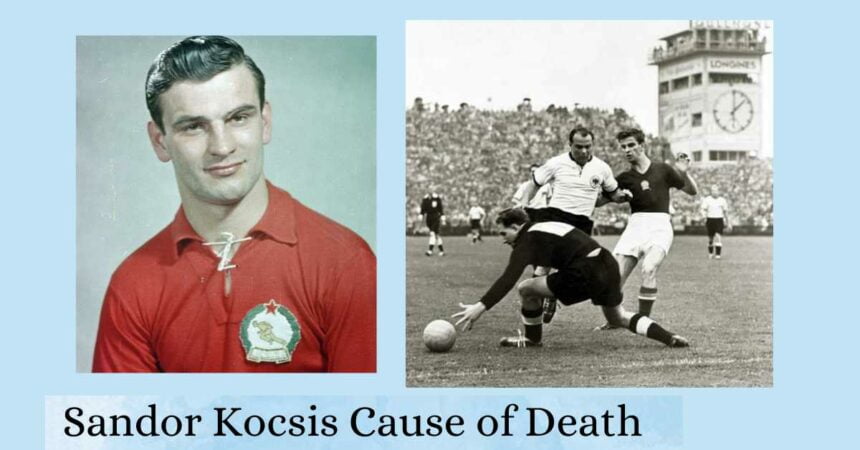Sandor Kocsis Dahari, a striker for the Hungarian national team, is revered as one of the greatest players in team history. After making his debut in 1948, Sandor was a part of the Hungarian national team’s “golden generation” for the next eight years.
The 1950s Hungarian national football team was arguably the most talented bunch of men ever to take the field for their country. Fans gave them nicknames like “Golden Team” and “Mighty Magyars,” and they are generally considered the best national team never to win the World Cup.
Despite their position as a small, developing football nation, the Magyars consistently set records throughout the 1950s. From 1949 to 1957, they scored at least once in 73 straight games, an unmatched streak that stands to this day. From June 4, 1950, until July 4, 1954, the team went a whole four years and one month without losing a game, making that streak the longest in the 20th and 21st centuries combined.
After winning Olympic gold in Helsinki in 1952, Hungary went on to win the 1953 Central European Championship. The team had a 42-1-1 record between 1950 and 1956, with only one loss coming in the 1954 World Cup final versus West Germany.
Ferenc Puskás was undeniably the star player on this illustrious squad. His name has become linked with greatness in Hungarian football, as he is the country’s all-time leading scorer. The country’s most renowned son is honored so much that even the national stadium is named after him: Ferenc Puskás Stadium.
If you enjoyed the post below, there are similar ones you should check out:
- Andy Warhol Cause Of Death: The Surgical Complications That Altered Art History!!
- Vince Edwards Cause Of Death: Was The ‘Ben Casey’ Star Battling With Cancer?
Early Life
Sandor Kocsis, a legendary former international footballer for Hungary, was born in the capital city of Budapest. We don’t know what his parents did for a living if anything. He came from a middle-class household in the Budapest suburbs and had a lifelong dream of making it as a professional football player.
There is a major gap in our knowledge of the ages of his siblings. Soon, we will be adding new details. Kocsis was invited to join the Kobanyai TC football club’s youth team because of his obvious talent and skill at such a young age.
During his greatest playing years with his professional and national team, he wore jersey number 8. The legendary Hungarian footballer wore the surname Kocsis on both his club and national team uniforms.
Sandor Kocsis Cause of Death
Sandor Kocsis, a former striker for the Hungarian national football team, was a legend in his own time. After leaving football behind, Sandor began experiencing gastrointestinal issues. The medical professionals he visited with concluded that he suffered from both stomach cancer and leukemia. In Barcelona, he was receiving medical care.
Sandor Kocsis lost his courageous fight against cancer on July 22, 1979, at the age of 49. He tragically lost his life after tumbling from a Barcelona hospital’s upper floors. It is still unclear whether the former football player died by his hand, in an accident, or at the hands of others.
Check Here Facebook Post:
Crafting A Legacy
Although Kocsis and Puskás both had successful professional careers in Spanish football, their legacies were cemented during their time spent together with the Hungarian national team. Puskás and Ferenc Puskás dominated international football as a genuine tandem in the 1950s, but today, Puskás is universally recognized as Hungary’s greatest clinical striker.
After all, he has scored more goals than anybody else in the country’s history. For the Magyars, he scored an incredible 84 goals in his 85 international appearances, making him the second-highest goal scorer in international football history after only Ali Daei of Iran.
While Puskás has a higher goal total than Kocsis, it might be argued that this is only because he entered the national team earlier than his striking partner. At the same time, in 1956, both men’s international careers with Hungary came to an end. When the Hungarian Revolution broke out, the couple chose to become refugees and leave their place of origin.
Unfortunately, the Hungarian national team has disbanded. While Puskás’ international career kicked off in 1945, Kocsis didn’t get his first cap until 1948. As a result, Puskás was able to play 17 more games than Kocsis could ever hope to play in his whole career. This, rather than his natural ability, is what makes Puskás Hungary’s all-time leading scorer.
If you can believe it, Kocsis was the more clinical striker. His 75 goals for Hungary in 68 games is second only to Poul Nielsen of Denmark for the best goal-scoring average in international competition. He scored 1.103 goals per game, which is lower than the 1.37 goals per game scored by Nielsen, despite playing in nearly 30 more games against considerably tougher competition.




